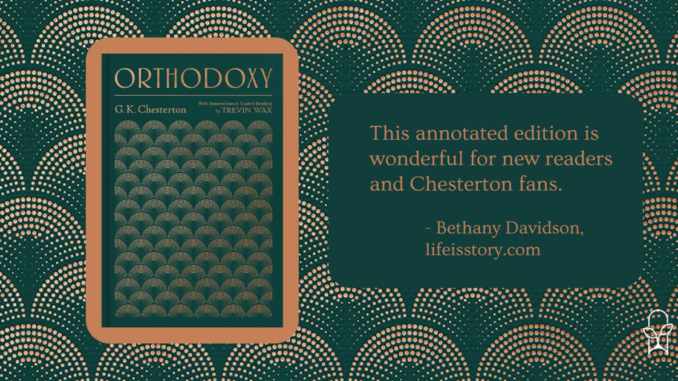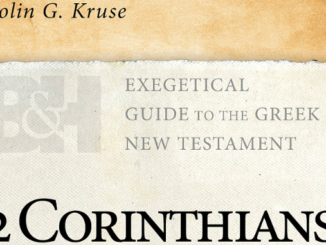
Also by this author: The Thrill of Orthodoxy: Rediscovering the Adventure of Christian Faith
Published by B&H Publishing, B&H Academic on March 1, 2022
Genres: Academic
Buy on Amazon
Goodreads

Catholics and Protestants alike have long appreciated Chesterton's Orthodoxy as a classic work of apologetics. It is his recounting of his quest to found a new religion, a philosophy of life that would include everything that makes most sense of the world, only to discover at the end of his journey that the religion and its philosophy already exist. It is Christianity. However, due to the temporal and cultural difference between us and Chesterton in 1908, much of the book is not easy to understand upon first (or second) reading. This version of Orthodoxy (with annotations and guided reading) will make Chesterton's classic more accessible for the first-time reader and will also provide enjoyment for the person who has enjoyed Orthodoxy for many years.
I first read Orthodoxy when I was sixteen. I was extremely impressed with G. K. Chesterton’s precise thinking, writing style, and wit, and the librarian who helped me with my inter-library loan copy was extremely impressed with me for reading it. However, even though I greatly appreciated Chesterton’s writing and his unconventional approach to defending Christianity, there were many elements that went over my head, or that I didn’t understand well enough to remember long-term. Orthodoxy: With Annotations and Guided Reading by Trevin Wax is a beautiful, nicely bound new edition that makes this classic apologetics text more accessible to modern readers, and it was the perfect way for me to reread this title.
In some ways, Orthodoxy seems amazingly current. One of Chesterton’s first topics is the modern folly of trying to “believe in yourself,” and he addresses many of the same circular, flawed arguments against Christianity that we still hear today, especially in terms of the relationship between science and the supernatural. However, even though nothing much has changed in some spheres since 1908, we live a world apart from Chesterton in other ways. The annotations from Trevin Wax help to bridge that gap, explaining cultural references, place names, events, and people referenced throughout. He is extremely thorough with this, without assuming what his readers will know, and the notes are never obtrusive or distracting.
Since Chesterton references a dizzying array of past-century writers and philosophers, I found the footnotes extremely helpful. I also appreciate the way that Trevin Wax broke up extremely long paragraphs to make them more digestible, and he added headings to help readers follow Chesterton’s ideas and see his arguments unfold. There are also brief summaries at the beginning and end of each chapter, helping readers either anticipate or further process what Chesterton covers. These changes all add to the reading experience, and Catholic readers should know that the summaries are all very objective and directly related to the text, without Protestant-focused commentary.
If someone is planning to read Orthodoxy for the first time, I would strongly encourage them to choose this edition, since the annotations and chapter summaries make it much easier for someone to follow Chesterton’s references and his brilliant, complex lines of argumentation. However, I would also recommend this to readers who are already familiar with the book. Reading this version helped me gain much more from the classic text, and this new edition will be a wonderful resource for new readers and Chesterton fans.



